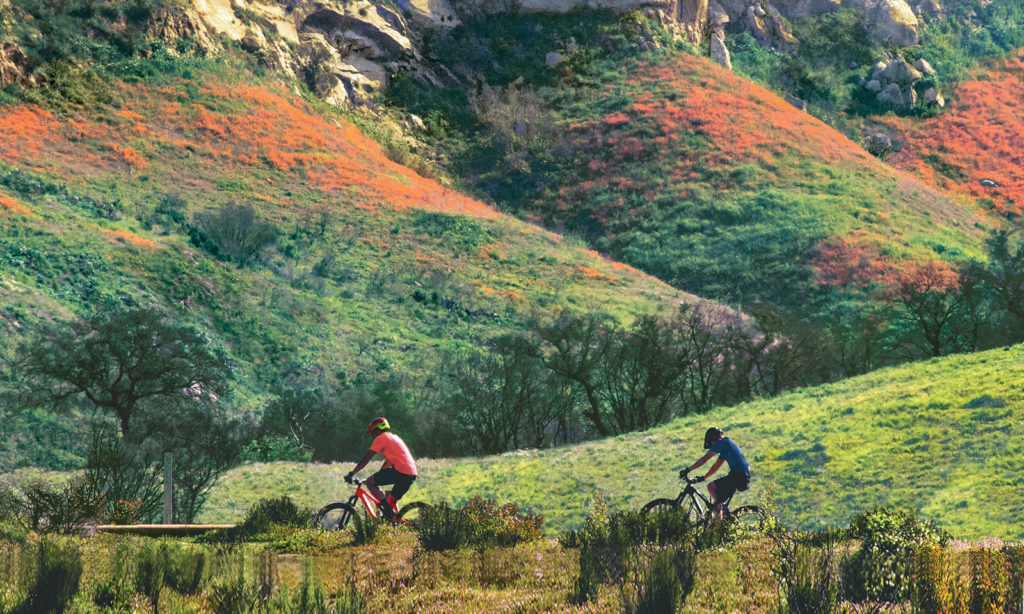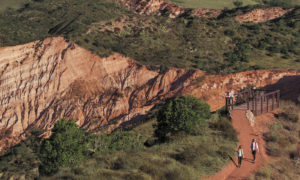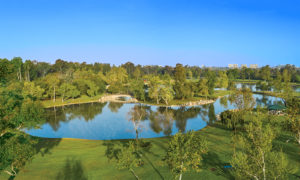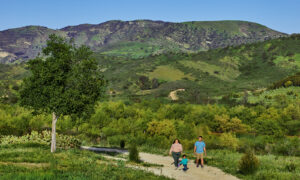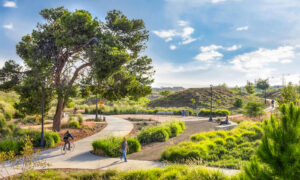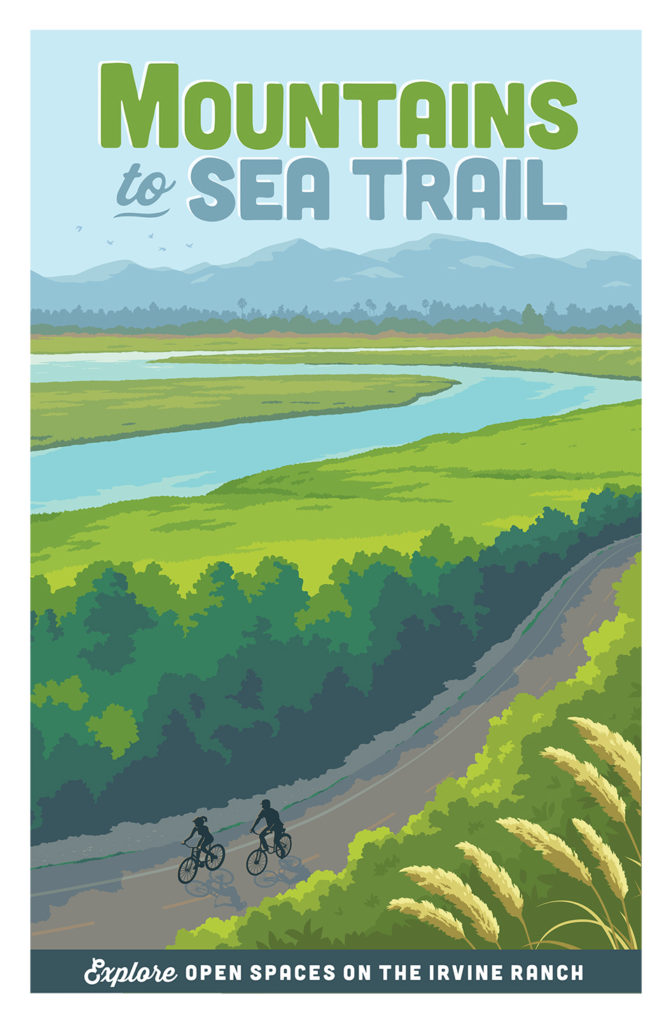 Early on in the pandemic, Anthony Sok discovered a passion for cycling. He bought a road bike and then happened to read online about a trail called Mountains to Sea.
Early on in the pandemic, Anthony Sok discovered a passion for cycling. He bought a road bike and then happened to read online about a trail called Mountains to Sea.
“That ought to be a win,” he figured.
He was right. On a brilliant June afternoon, the 22-mile route took Sok and his brother, Pherum, through oak woodlands, green parks and neighborhoods full of immaculate homes.
Following the San Diego Creek, they pedaled past meadows filled with poppies and lupine to the shore of Upper Newport Bay, one of the few unspoiled estuaries left in Southern California. There, they paused to watch pelicans, egrets and seagulls soar over the water at sunset.
The brothers made a day of their journey. On the way south, they stopped for an Asian fusion lunch at Krave, and on their ride back, they treated themselves to coffee and doughnuts at Donut Star in Alton Square.
“We were mesmerized the whole time,” recalls Sok, a local sound engineer. Nor were they distracted by pitted roads or litter as they rode alongside cyclists, joggers and people riding on horseback. The entire route felt safe and seemed carefully maintained, Sok says. While other trails in other cities had seemed “neglected or a little sketchy,” he says, along the trail “there wasn’t a single eyesore.”
One of the greatest perks of life in Irvine is the proximity to tens of thousands of acres of undeveloped mountains, forests and coastland, conserved by Irvine Company. All that open space is a central feature of Irvine’s Master Plan and subsequent gifts that have conserved a total of 57,500 acres of the historic Irvine Ranch. The land stretches for 9 miles along the Pacific coast and 22 miles inland to the Cleveland National Forest, and ranges from remote canyons and mountain watersheds to grasslands, oak woodlands, coves and beaches.

Still, living so close to nature wouldn’t be half as nice without convenient ways to explore it, which is why the Irvine Ranch Conservancy, established in 2005, has provided hundreds of miles of trails that offer public access for biking, hiking, walking, jogging and horseback riding.
Irvine Company Chairman Donald Bren, who created the conservancy with a gift of $50 million, has promised it would “set a new standard for conservation stewardship and public access that will be understood and appreciated not just in Orange County, but throughout the United States.”
Today, the nonprofit agency collaborates with state, local and federal agencies and deploys scientists, landscape engineers and volunteers to care for one of the nation’s largest urban parks, restoring habitat, removing invasive species and watching out for wildfires. But maintaining public access is always a priority, ensuring Irvine residents the rare opportunity of enjoying wilderness while living in one of the major metropolitan areas of the United States.
For all to enjoy
You don’t have to be an athlete to enjoy the Mountains to Sea Trail, which is actually a series of trails linked together, with directional signs to point the way. It’s a mostly level, paved route, with some sections of concrete and crushed rock, declining gradually as it moves south.
True to its name, the trail leads from the forested foothills of the Santa Ana Mountains through Weir Canyon Nature Preserve and Irvine and Peters Canyon regional parks, after which it passes through unincorporated parts of Orange County and the cities of Orange, Tustin, Irvine and Newport Beach before arriving at the coast. “You get a little bit of everything,” Sok says. “It’s a changing mix of city and natural scenery.”
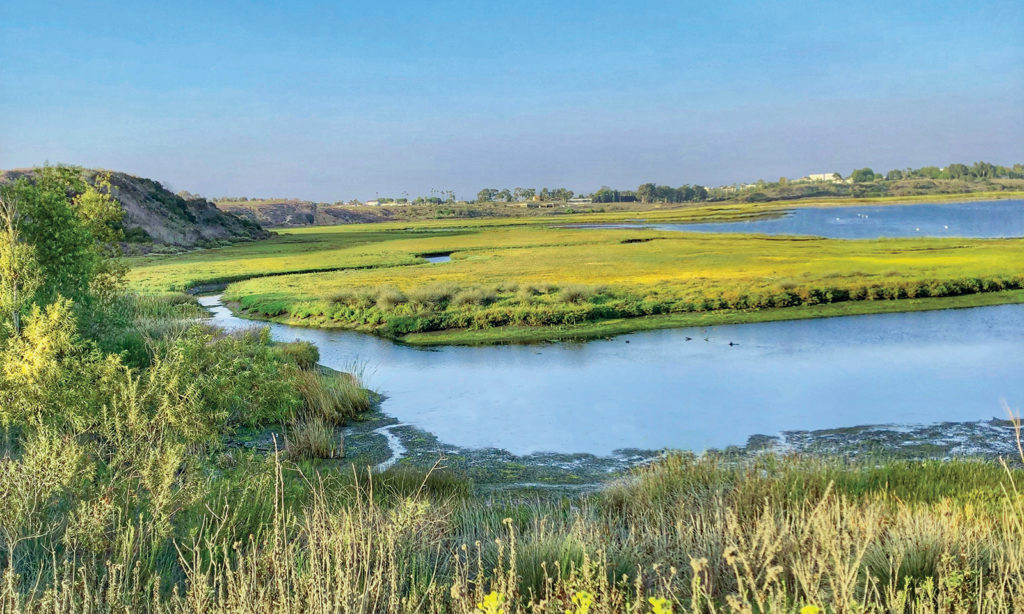
Travelers who want to start at the rugged, mountainous beginning of the trail need to sign up in advance for any one of a variety of free, guided hikes to get access to the park. Many cyclists say they can complete the entire round trip in about five hours. But those who want a shorter route can park and join the trail at several points to the south, including Peters Canyon Regional Park (for $3), Orchard Hills Shopping Center and Upper Newport Bay Nature Preserve. Parking and restrooms are also available at smaller local parks along the way, and at the trail’s end at Upper Newport Bay. Two of the easiest access points for Irvine residents are at Col. Bill Barber Marine Corps Memorial Park and Mike Ward Community Park.
Wildlife connections

The wilder parts of the Mountains to Sea Trail run by the marshlands of the San Joaquin Wildlife Sanctuary, home each winter to more than 30,000 migratory birds. Passing along bluffs of coastal sage scrub, travelers may catch glimpses of golden eagles, red-tailed hawks, bobcats, deer and snakes. The open space is also home to the endangered California gnatcatcher, a small, gray songbird with a harsh, scolding cry. After the marshlands, the trail passes the west side of the UC Irvine campus before reaching the Upper Newport Bay Nature Preserve, which hosts a nature center that offers information on the local flora and fauna. This is also where the trail connects with an 11-mile loop around the estuary, cooled by the ocean breeze and ideal for bird-watching.
An acclaimed route
A number of public agencies maintain the trail, keeping it smooth and free from debris, while the Irvine Ranch Conservancy takes care of the Weir Canyon portion.
The efforts have paid off, yielding five-star reviews on sites, including AllTrails.com and even Yelp.
“A godsend,” is how one Yelp reviewer described the trail, which he discovered while stuck in a hotel, bored, with his son as they accompanied his wife on a business trip. “Wildlife, great trails, and … utterly safe.”
In 2006, the U.S. Secretary of the Interior designated the Mountains-to-Sea route as a National Recreation Trail, joining it with a network of more than 900 trails encompassing more than 10,000 miles and offering exceptional ways to enjoy the outdoors.
The route can be sunny, so make sure to bring sunscreen and a hat.

